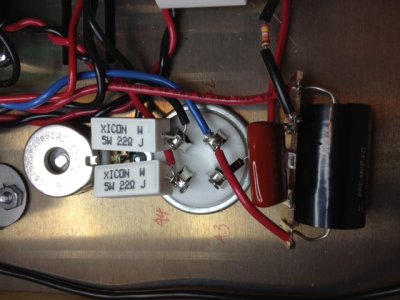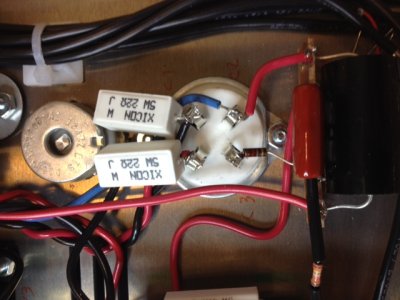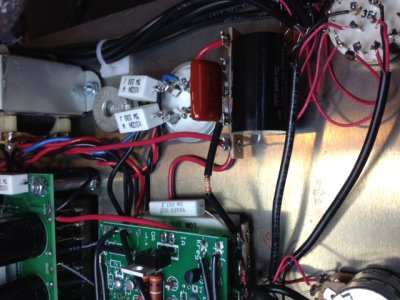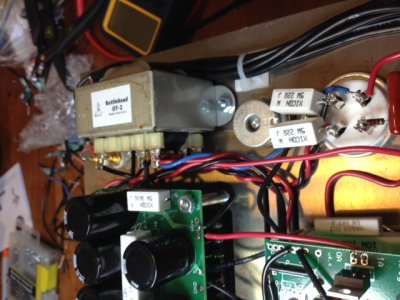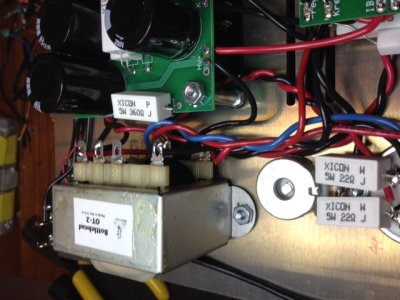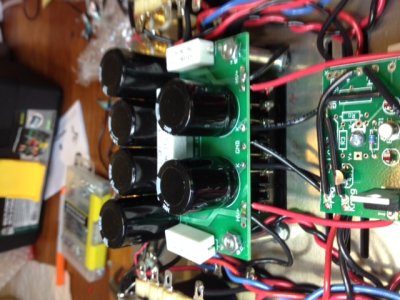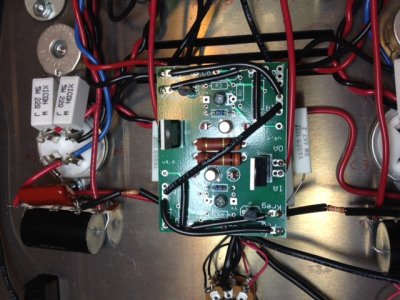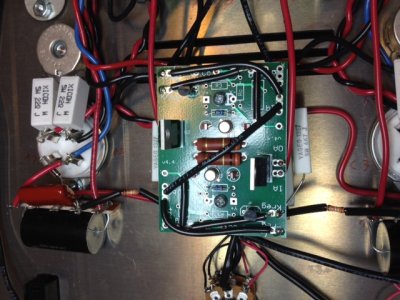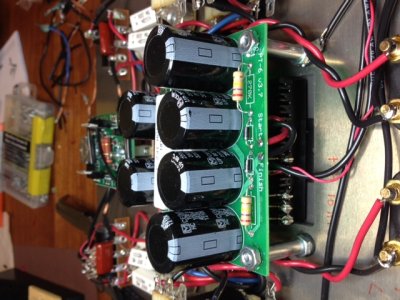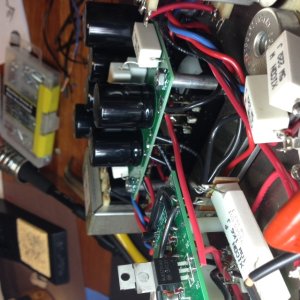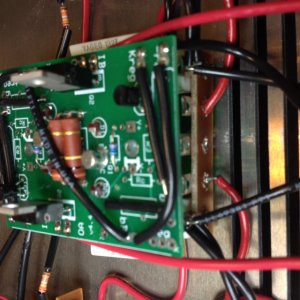These are the resistance readings for my just completed 2A3 that may be off the mark. Measured with a Wavetek 27XT.
T1 bounced around, then 0
T2 bounced around, then 0
T14 0
T15 0
T17 0
T19 0
A2 0
C2 0
These are all asterisked in the manual, meaning the values may vary from ohmmeter to ohmmeter, but watch out for a reading of zero in one of the terminals. Since I got zero for all of them, and the other readings were spot on, I went ahead and powered up the amp. 12AT7 glowed, couldn't tell if 2A3's were lit before I saw a wisp of smoke, went ahead and shut amp down. Follow up readings are all the same as above. Not sure where smoke originated from.
Any suggestions? Yes, I'm not firing amp up again until ALL readings are correct. Thanks in advance, Eric.
T1 bounced around, then 0
T2 bounced around, then 0
T14 0
T15 0
T17 0
T19 0
A2 0
C2 0
These are all asterisked in the manual, meaning the values may vary from ohmmeter to ohmmeter, but watch out for a reading of zero in one of the terminals. Since I got zero for all of them, and the other readings were spot on, I went ahead and powered up the amp. 12AT7 glowed, couldn't tell if 2A3's were lit before I saw a wisp of smoke, went ahead and shut amp down. Follow up readings are all the same as above. Not sure where smoke originated from.
Any suggestions? Yes, I'm not firing amp up again until ALL readings are correct. Thanks in advance, Eric.

